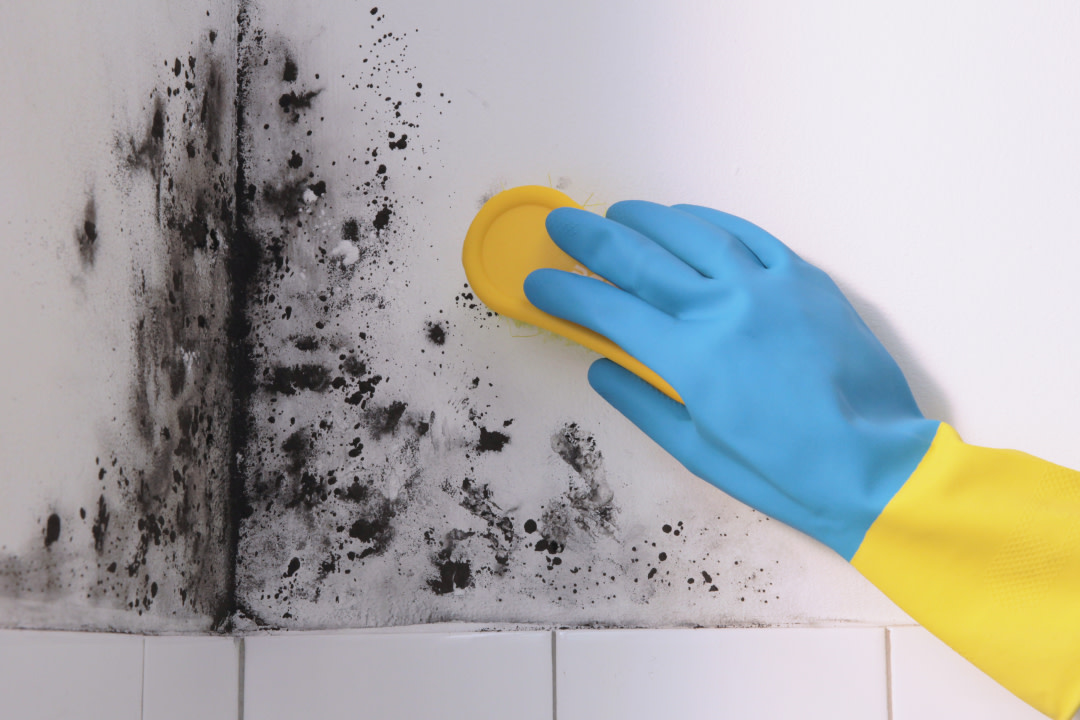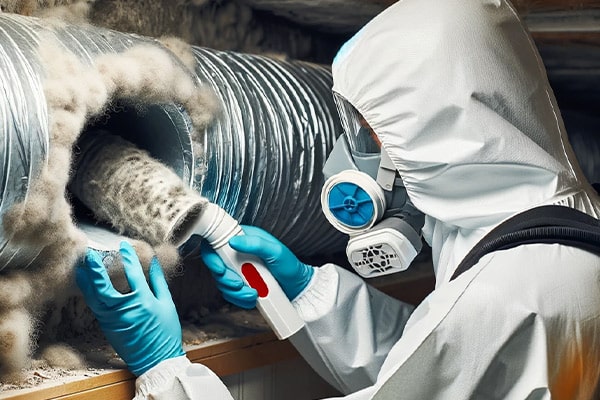Mold in an office or home can cause many health issues such as allergies and asthma as well as damage the structural integrity of your building such as damaging floorboards and insulation.
We’ve put together five tips on how to clean up mold and protect the health of your family or employees below, as well as making sure your building is safe and clean to live in.

How to clean mold
When it comes to removing mold from clothes, your best bet is to use hydrogen peroxide, baking soda, or vinegar.
If you notice mold on your clothes, try to wash them as soon as possible.
If mold is allowed to exist, it can permanently damage the fabric and permanently damage your clothing.
Make sure to wash and dry them immediately to prevent further mold growth.
You can pre-treat clothes by soaking them in two cups of bleach or vinegar to help remove mold stains and kill mold bacteria.
If there is any excess mold, wash it first with hot water before preparing a cleaning solution and soaking the contaminated item.
You can also prevent mold growth by storing your clothes properly.
Make sure your wardrobe is not too full as this may reduce the amount of ventilation and make sure your wardrobe is not too close to the wall so you can avoid condensation.
Mold thrives in dark, cool, and damp places. Your clothes will be better protected in the long run if you address the problem at its source.
How to get rid of mold on the walls
Mold on walls is one of the most common problems a building can face especially in areas with poor ventilation and insulation. There are many effective ways to kill mold bacteria on walls.
You can mix bleach with water to form a spray or paste that you can then apply to the mold.
Make sure you are using it safely and that the wall is not made of drywall or wood.
These materials are porous and bleach will not work effectively. You can use bleach, baking soda, or a vinegar solution to scrub the affected area before rinsing off the cleaning solution and letting the wall dry.
You can also use a special mold wash specifically designed to kill mold which can be more thorough and effective than simply using bleach.
Sponge the mold area with a diluted solution of mold cleaner and then allow it to dry, making sure there is no remaining moisture that could encourage mold growth.
Remove mold from the bathroom
Because of the condensation that can form on glass and walls due to steam and water, mold can often flourish in showers if not treated properly, especially when walls are left damp and not dried well.
You can use specialized mold cleaners and mildew removers to clean your shower or you can use other household products like bleach or baking soda and vinegar.
Making a solution of water and spraying or rubbing it on the affected area is the best way to kill mold bacteria.
Use a stiff brush to get rid of the mold after spraying the area, and the shower should be completely clean.
One of the main parts of the shower that is often affected by mold is the drain.
Pouring a mixture of baking soda, vinegar, and water down the drain should help break up any mold growing where you can’t see it and will help kill bacterial odors as well.
You can also prevent mold growth in the shower by improving ventilation.
You can leave a window open to help balance the humidity of the steam or install a fan or dehumidifier.
It is also a good idea to warm up the bathroom before showering.
This will heat up cold surfaces so that the steam from the shower doesn’t react with the cold areas and condense.
The best way to deal with mold before it becomes a problem is to make sure your home or office is properly insulated

Question About Cleaning Mold?
How can I prevent mold growth in my bathroom?
To prevent mold growth in your bathroom, ensure proper ventilation by using exhaust fans or opening windows during and after showers.
Wipe down wet surfaces regularly, and address any leaks or plumbing issues promptly to prevent moisture buildup.
Can mold affect my health?
Yes, exposure to mold can have adverse health effects, especially for individuals with respiratory conditions or allergies.
Common symptoms of mold exposure include coughing, wheezing, nasal congestion, and skin irritation.
If you experience any of these symptoms, seek medical attention and address the underlying mold issue in your home.
Are there any natural remedies for preventing mold?
Yes, several natural remedies can help prevent mold growth. These include using essential oils like tea tree oil or lavender oil, as well as regularly airing out and sunlight exposure to mold-prone areas. Additionally, keeping indoor humidity levels low can inhibit mold growth naturally.
Conclusion
Embracing a Mold-Free Lifestyle in Dubai In Dubai’s dynamic urban landscape, maintaining a mold-free home is essential for both your health and the longevity of your property.
By following these five essential tips—assessing the mold situation, controlling indoor humidity, implementing effective cleaning techniques, utilizing natural remedies, and consulting professional mold remediation services—you can banish mold from your home and enjoy a healthier living environment in Dubai.



